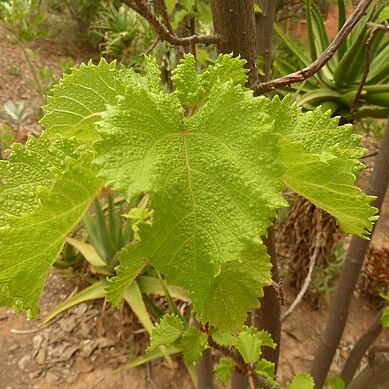Perennial, small tree or shrub, 2-7 m high. Leaves round to ovate, 50-150 x 30-100 mm, sometimes slightly 3-lobed, covered with stinging hairs above, pubescent when young, later glabrescent, apex rounded to acute, margins coarsely toothed; petioles up to 80 mm long; stipules up to 8 mm long, free, lanceolate. Inflorescence mostly in axils of fallen leaves; male inflorescence up to 150 mm long; peduncle with stinging hairs. Male flowers 5-merous, bracteate, ± 1 mm in diam. Female flowers 4-merous, pedicellate, glabrous, ± 1.25 mm long. Flowering time Nov. Fruit small achenes, up to 3 mm in diam., with persisting perianth, ochre to brown.
A small tree. It loses its leaves during the year. It grows 2-7 m tall. It has soft wood. The bark is pinkish-brown and smooth. The branches have stinging hairs. Male and female flowers are probably on separate trees. The leaves are simple and alternate. They are round or heart shaped with deep teeth along the edge. The leaves are 5-15 cm long by 3-10 cm wide. They are oval but can have 3 lobes. The flowers are in short clusters in the axils of leaves. They are pinkish-green.
Shrub or small tree, up to 5 m high. Stipules 1.0-2.5 mm broad, entirely glabrous. Leaf lamina not bullate. Stamens white. Flowers (perianth) green.


